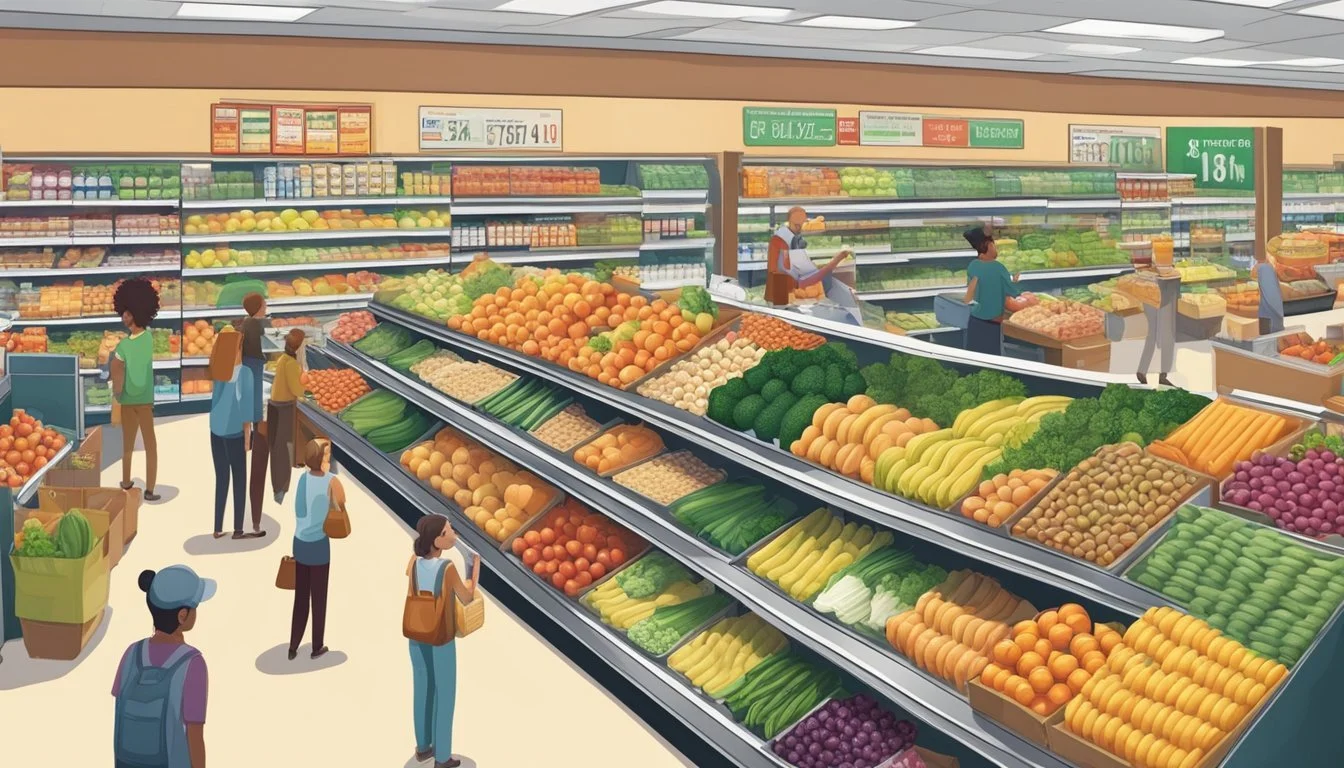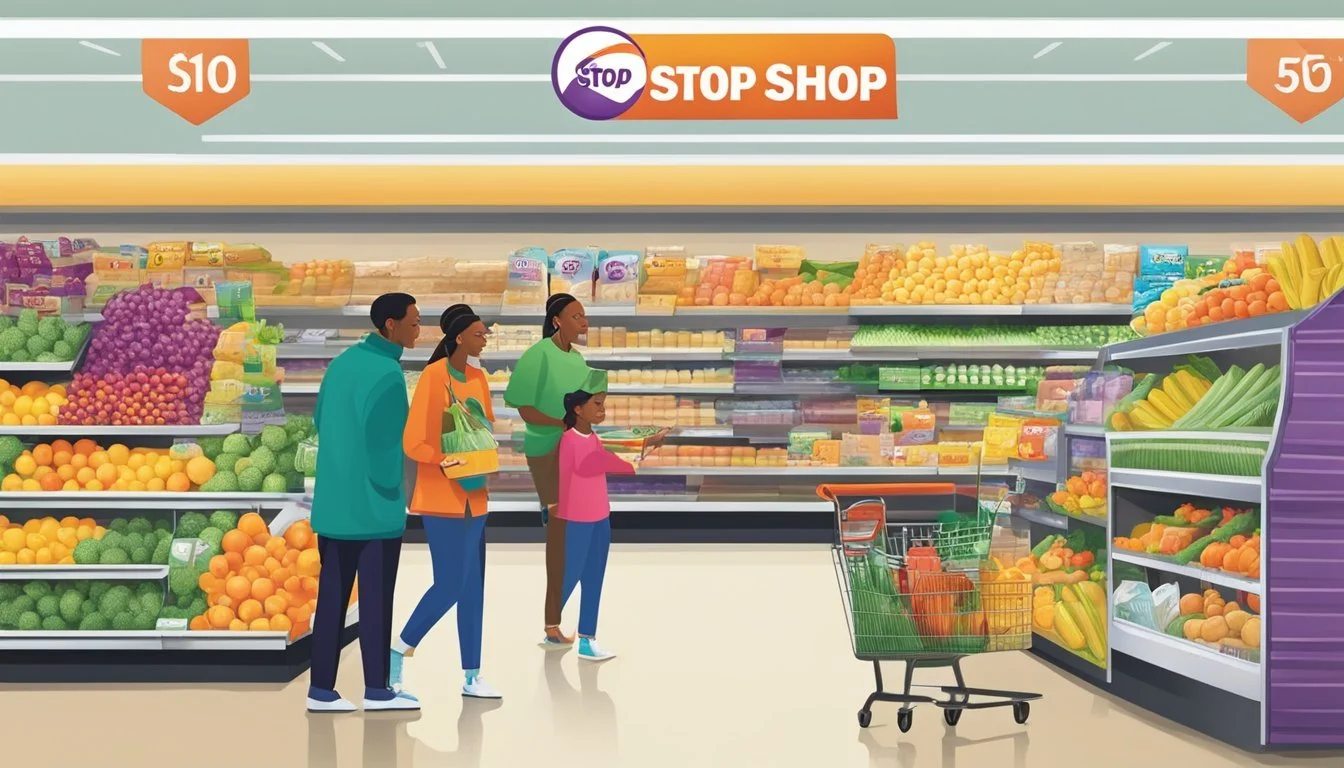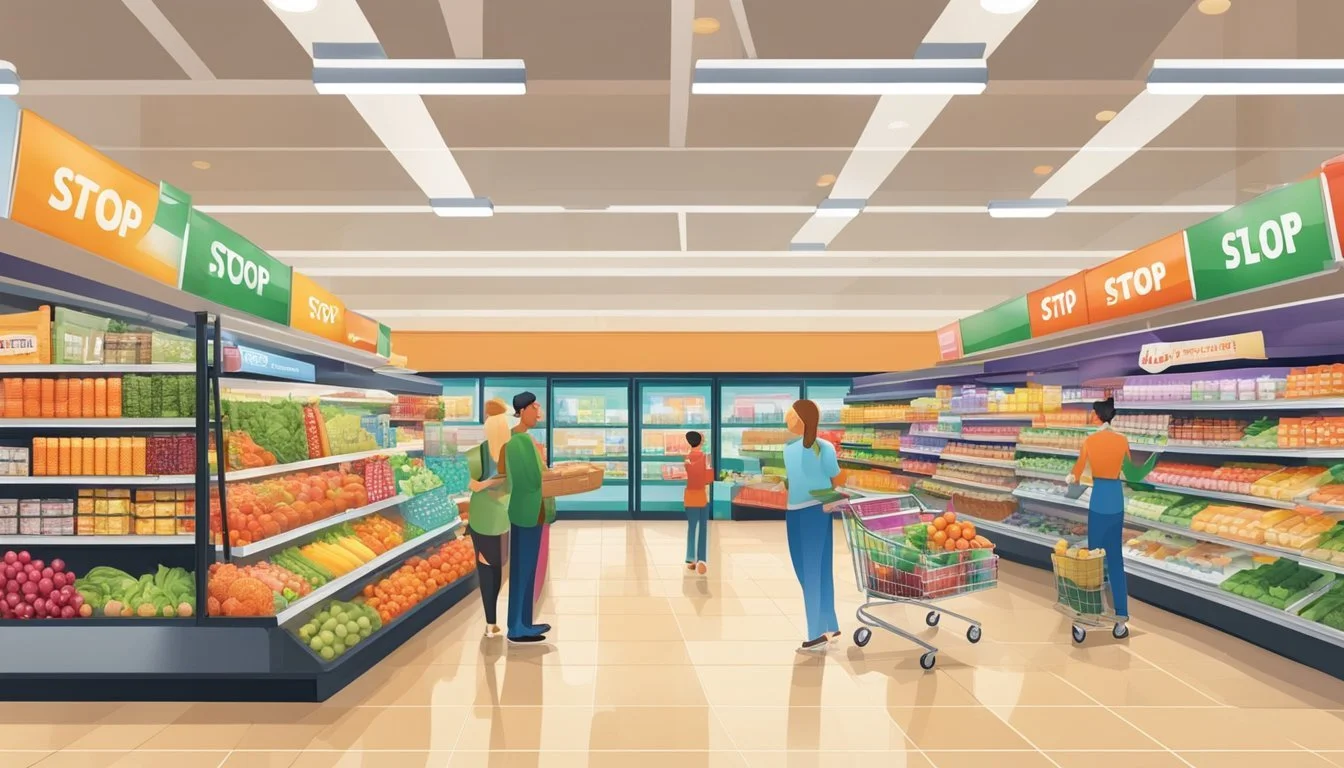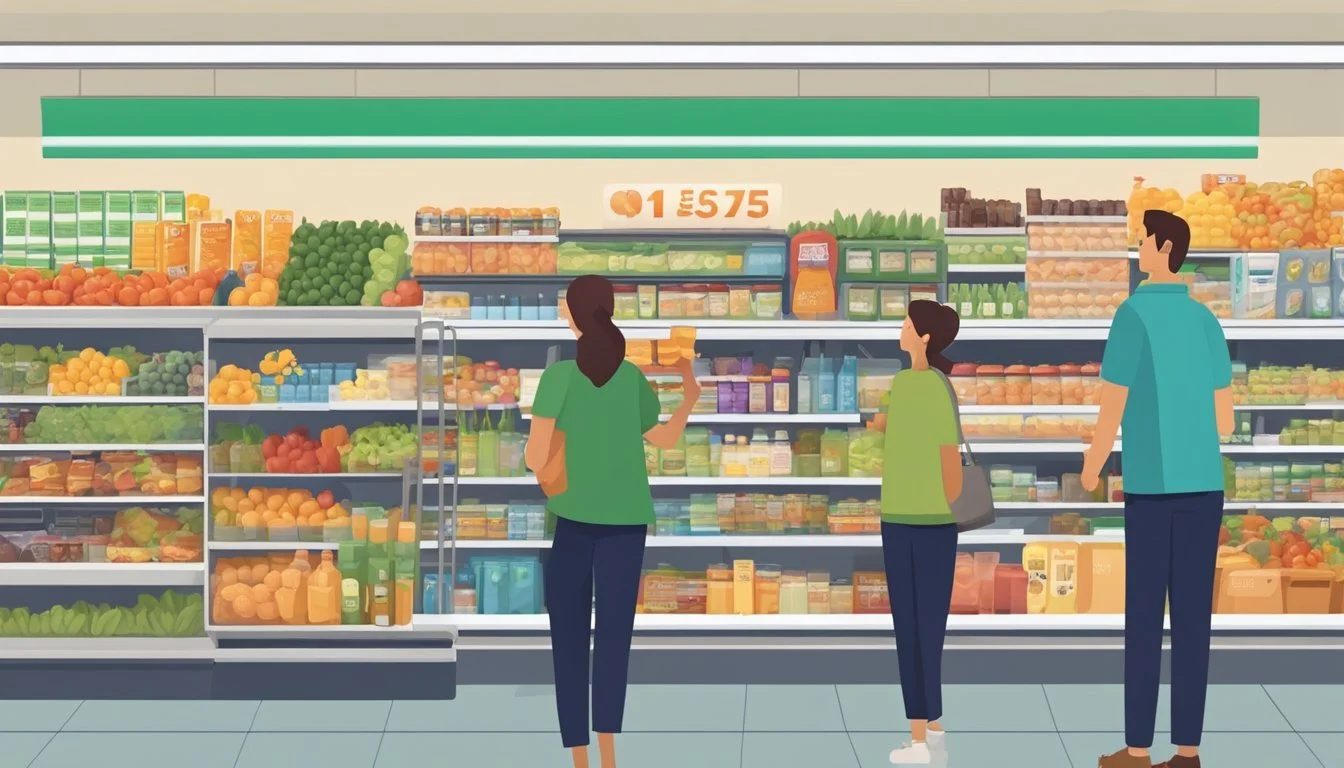Is Stop & Shop Cheaper Than Winn-Dixie?
A Price Comparison Analysis
Grocery shopping can be a significant expense for many households, prompting consumers to seek out the most affordable options. Two popular supermarket chains, Stop & Shop and Winn-Dixie, often come up in price comparisons for shoppers looking to trim their grocery bills.
While both stores offer competitive pricing, Winn-Dixie generally tends to be cheaper than Stop & Shop. This price difference is particularly noticeable in Winn-Dixie's private label offerings, which can be up to 20% more affordable than national brands. Stop & Shop, with its extensive presence in the Northeast, typically has higher prices compared to discount-oriented stores like Winn-Dixie.
Shoppers should consider factors beyond just overall pricing when choosing between these two chains. Stop & Shop may offer a wider selection of specialty items, while Winn-Dixie's focus on affordability could lead to more savings on everyday essentials. Ultimately, the best choice depends on individual shopping needs and priorities.
Understanding Grocery Store Pricing
Grocery store pricing involves complex strategies and factors that influence the cost of items on shelves. Retailers employ various tactics to attract customers while maintaining profitability.
Factors Affecting Grocery Store Prices
Supply and demand play a crucial role in determining grocery prices. Seasonal availability impacts produce costs, while global events can affect commodity prices. Transportation expenses and labor costs also contribute to overall pricing.
Location influences prices, with urban stores often charging more due to higher operational costs. Competition in the area can drive prices down as stores vie for customer loyalty.
Wholesale costs from suppliers impact retail prices. Stores negotiate bulk discounts to offer competitive prices. Brand popularity and perceived quality affect pricing, with premium brands commanding higher prices.
Pricing Strategies of Grocery Stores
Grocery chains use different pricing models to attract customers. Some employ everyday low prices, offering consistently lower prices on staple items. Others focus on frequent sales and promotions to create a perception of value.
Loss leaders are common, where stores price certain items below cost to draw customers in. These are often advertised prominently to increase foot traffic.
Digital coupons and loyalty programs provide personalized discounts to encourage repeat visits. Many stores offer private label products at lower prices than national brands to provide budget-friendly options.
Dynamic pricing adjusts costs based on demand, time of day, or competitor prices. This strategy is becoming more common with the use of electronic price tags.
Comparing Major Grocery Retailers
Major grocery chains differ significantly in their pricing strategies, product offerings, and overall shopping experience. These factors play a crucial role in determining which retailer provides the best value for consumers.
National Brands Versus Store Brands
Many grocery retailers offer a mix of national brands and their own private label products. Walmart, known for its low prices, stocks a wide range of both. Their Great Value brand often undercuts national brand prices by 10-30%. Aldi takes a different approach, focusing primarily on private label items to keep costs down.
Kroger and Publix also have strong store brand lineups. Kroger's Simple Truth organic line competes with national organic brands at lower price points. Publix's Greenwise brand offers similar value in natural and organic products.
Trader Joe's is unique, with over 80% of its products being private label. This strategy allows them to offer distinctive items at competitive prices.
Quality and Selection of Products
Product quality and selection vary widely among grocery retailers. Whole Foods is known for its high-quality organic and natural offerings, but at premium prices. H-E-B, popular in Texas, balances quality and affordability with a diverse product range.
Aldi and Lidl offer smaller, curated selections to keep prices low. This approach may limit choice but often results in faster shopping trips. Meijer and ShopRite, on the other hand, provide extensive product ranges in large-format stores.
Walmart's massive scale allows for broad selection across categories. Their Supercenter format includes groceries alongside general merchandise. Kroger's larger stores also offer wide product variety, including extensive fresh departments.
Trader Joe's focuses on unique, often internationally-inspired products. This specialization attracts customers looking for novel items not found elsewhere.
Specific Price Comparison
A detailed analysis of prices for common grocery items reveals notable differences between Stop & Shop and Winn-Dixie. These variances can significantly impact overall shopping costs for consumers.
Stop & Shop vs. Winn-Dixie: Dairy and Produce Costs
Stop & Shop generally prices dairy products slightly higher than Winn-Dixie. A gallon of milk at Stop & Shop costs $3.99, while Winn-Dixie offers it for $3.79. Cheese prices follow a similar pattern, with a 16-oz block of cheddar priced at $4.29 at Stop & Shop and $3.99 at Winn-Dixie.
In the produce aisle, Winn-Dixie tends to have lower prices on fresh fruits and vegetables. Bananas are priced at $0.49 per pound at Winn-Dixie, compared to $0.59 at Stop & Shop. A 5-lb bag of potatoes costs $3.99 at Winn-Dixie and $4.49 at Stop & Shop.
Meat, Bread, and Pantry Items
Meat prices show mixed results between the two chains. Chicken breasts are priced at $2.99 per pound at Winn-Dixie and $3.29 at Stop & Shop. However, ground beef is slightly cheaper at Stop & Shop at $3.99 per pound, compared to $4.19 at Winn-Dixie.
Bread prices are comparable, with a loaf of white bread costing $1.99 at both stores. Pantry staples like canned vegetables and pasta show minimal price differences. A 15-oz can of green beans is $0.89 at Winn-Dixie and $0.95 at Stop & Shop.
Diet-specific items, such as gluten-free bread, tend to be more expensive at Stop & Shop, priced at $5.99 compared to $5.49 at Winn-Dixie.
Consumer Savings Opportunities
Both Stop & Shop and Winn-Dixie offer various ways for customers to save money on their grocery bills. These include loyalty programs, digital coupons, and special discount events.
Loyalty Programs and Membership Benefits
Stop & Shop's GO Rewards program allows customers to earn points on purchases, which can be redeemed for discounts on gas or groceries. Members receive personalized deals and digital coupons tailored to their shopping habits.
Winn-Dixie's SE Grocers rewards program offers similar benefits. Shoppers earn points on eligible purchases, which can be converted into dollar-off rewards. The program also provides access to exclusive member-only pricing and digital coupons.
Both loyalty programs are free to join and can lead to significant savings for regular shoppers.
Shopping Deals and Discount Events
Stop & Shop runs weekly sales and promotional events. Their circular features BOGOs (Buy One Get One) deals and multi-buy discounts. The store also offers digital coupons that can be loaded directly to loyalty cards.
Winn-Dixie is known for its "Down Down" program, which provides long-term price reductions on hundreds of popular items. They also offer weekly BOGO deals and digital coupons through their app.
Both chains frequently run seasonal promotions and holiday-themed sales events. Savvy shoppers can maximize savings by combining store deals with manufacturer coupons and loyalty program discounts.
Shop Experience and Services
Stop & Shop and Winn-Dixie offer distinct shopping experiences and services. Both chains strive to meet customer needs through various amenities and shopping options.
Customer Service and Store Atmosphere
Stop & Shop maintains a clean and organized store layout. Employees are generally helpful and knowledgeable about product locations. The stores feature wide aisles and clear signage, making navigation easy for shoppers.
Winn-Dixie focuses on creating a friendly, community-oriented atmosphere. Their staff often engage in personable interactions with customers. The stores typically have a warmer ambiance with softer lighting and decor that reflects local tastes.
Both chains provide pharmacy services and in-store banks at many locations. Stop & Shop tends to have larger stores with more diverse departments, including expanded deli and bakery sections.
Online Shopping and Delivery Services
Stop & Shop offers robust online shopping options through Peapod. Customers can choose between home delivery and in-store pickup. The website and mobile app are user-friendly, allowing for easy product browsing and list creation.
Winn-Dixie provides online ordering with curbside pickup at select locations. Their digital platform is straightforward but may have fewer features compared to Stop & Shop's. Delivery services are available in some areas through third-party partnerships.
Both chains offer digital coupons and personalized deals through their loyalty programs. Stop & Shop's more extensive online presence gives it an edge in convenience for tech-savvy shoppers.
Geographical and Demographic Influence
The pricing strategies of Stop & Shop and Winn-Dixie are significantly influenced by their geographical presence and target demographics. These factors shape their market positioning and competitive approaches in different regions.
Regional Presence and Accessibility
Stop & Shop operates primarily in the Northeast United States, with over 400 stores across Massachusetts, Connecticut, Rhode Island, New York, and New Jersey. This regional focus allows the chain to tailor its offerings to local preferences.
Winn-Dixie, on the other hand, has a strong presence in the Southeast, with approximately 500 stores in Florida, Alabama, Louisiana, Georgia, and Mississippi. The company's regional concentration enables it to adapt its pricing and product selection to Southern consumer habits.
The accessibility of each chain varies by location. Stop & Shop tends to have a mix of urban and suburban stores, while Winn-Dixie is more prevalent in suburban and rural areas. This difference in store locations can impact operating costs and, consequently, pricing strategies.
Demographic Targeting and Market Segmentation
Stop & Shop typically caters to middle-income consumers in densely populated areas. The chain often emphasizes a wide product selection and quality perishables to appeal to its target demographic.
Winn-Dixie focuses on value-conscious shoppers in the Southeast. The company's pricing strategy aims to attract budget-minded consumers while still offering a full-service grocery experience.
Both chains adjust their product mix and pricing based on local demographics. For example, Stop & Shop may stock more international foods in diverse urban areas, while Winn-Dixie might emphasize Southern staples in certain locations.
The competition in each region also plays a role in pricing. Stop & Shop faces competition from other major Northeast chains, while Winn-Dixie competes with regional players and national discounters in the Southeast.
The Verdict on Value
Price comparisons between Stop & Shop and Winn-Dixie reveal a clear winner in terms of overall value. Winn-Dixie consistently emerges as the more budget-friendly option for shoppers.
Across various product categories, Winn-Dixie's competitive pricing strategy translates to lower costs for consumers. This makes it an attractive choice for those looking to save money on groceries.
Stop & Shop, while offering competitive prices, generally falls short when compared to Winn-Dixie's discount-oriented approach. The price gap becomes even more apparent when considering larger shopping baskets.
For budget-conscious shoppers, Winn-Dixie presents a compelling option. Its lower prices can lead to significant savings over time, especially for families or frequent grocery buyers.
It's worth noting that while Winn-Dixie beats Stop & Shop on price, other discount chains like Walmart may offer even lower prices. A separate comparison showed Walmart undercutting Winn-Dixie by approximately 29% on identical goods.
When seeking the cheapest grocery store, consumers should consider factors beyond just price, such as product quality, store location, and available promotions. However, purely in terms of cost, Winn-Dixie holds the advantage over Stop & Shop.







